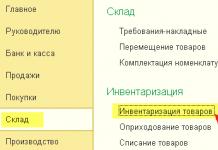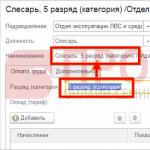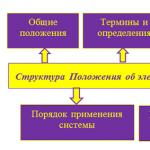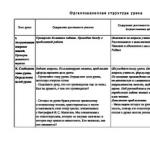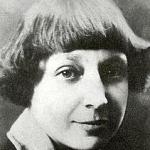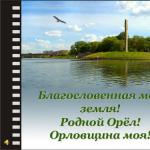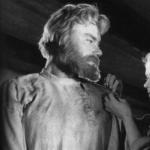Old Believers- group religious movements, united Russian Orthodox tradition, did not accept church reform 17th century Patriarch Nikon.
The mentioned reform is one of the most dramatic pages not only in history Russian Orthodox Church, but also in history Russia. The purpose of the reforms was unification of worship Russian Church with the Greek Church. As a result imposing new rules a church schism arose (until 1905, everyone who disagreed with the reform was called schismatics) - those who refused to perform new rituals brutally persecuted and were persecuted, in fact, society was on the threshold religious war. At this time it happened many mass suicides people who do not want to forcefully accept a new faith. The most common form of protest was self-immolation, only up to 1690 claimed the lives of about 20 thousand people.
Changes carried out through the Nikonian reform concerned external ritual parties. For example, replacing double finger sign of the cross on tripartite, shift directions of the religious procession(against the sun, not salting), etc. Also, many corrections were made regarding editing texts of the Holy Scriptures and liturgical books, related to spelling variations, minor adjustments that do not change the overall meaning. For outsider all these changes may seem completely not fundamental and not affecting the essence of Orthodoxy, but in the 17th century this led to a tragic split in the church and society, which finally has not yet been eradicated.
And now, despite numerous steps towards reconciliation, the relationship between the Old Believers and the Russian Orthodox Church is different complexity. For example, Old Believers consider themselves true Orthodox, and the Russian Orthodox Church is called heterodox church. That's why for the transition of new believers to the Old Believers is required either simply anointing(possibly even with retention of clergy), or even baptism. For today
The Old Believers have a lot of varieties and subvarieties. But the main division is priests and non-priests.
Popovtsy- It is the most numerous currents. Their distinctive feature is the recognition of the need for priests in conducting services and rituals. At the same time, some priests accept acceptance of priests from the New Believers Church. They are also characterized participation in church life of the laity, along with the priests. Priesthood became most widespread in Nizhny Novgorod region, Don region, Chernigov region, Starodubye. From a dogmatic point of view, the priests are practically they do not differ from the New Ritual Church, except that they adhere to pre-Nikonian rites and liturgical books. Today the number of priests is estimated at 1.5 million people, while their main centers in Russia are Moscow and Rostov regions.
Bespovostvo(another name is ancient Orthodoxy) has more radical differences from the New Believers. Died in 1654 without leaving the receiver, the only one Old Believer bishop. According to church dogma, only bishop has the right to dedicate to the clergy. Thus, formally following canonical rules, after the death of all pre-Nikonian priests, the Old Believers were forced to form priestless sense. Bespopovtsy, fleeing persecution, settled in wild and uninhabited places- one of which was the shore of the White Sea (that’s why this community was called Pomors). Number of bespopovtsy estimated at half a million people.
The Old Believers played a big role in preserving Orthodox cultural heritage. This applies to both church hymn(unique features of the singing style - absence of pauses, continuity and uniformity of sound), and the famous Old Believer icon painting based on tradition Russian and Byzantine schools. After the 19th century in the official Russian Orthodox Church icon painting ended up in complete oblivion, Old Believer icon painters remained the only guardians of tradition, which allowed "reopen the icon" at the turn of the 19th and 20th centuries.
Contrary to popular belief, despite repressive measures by the government, Old Believers was very common- almost in the 19th century third of the population adhered to Old Believer traditions. Played an important role in the economy Old Believer merchants, which became the pillar of development entrepreneurship. This was justified by those cultivated in the Old Believer environment traditions- ban on smoking and alcohol, loyalty to your word, hard work.
20th century was the same for the Old Believers tragic, as well as for the Russian Orthodox Church. If after the revolution 1905 Old Believers received some relaxations- the right to organize processions of the cross, have bells ringing, etc. - then when Soviet power their brutally repressed on a par with the New Believers.
The Old Believers are rightfully just as important and significant direction Orthodoxy as well as the New Believers, having played an invaluable role in preservation and development of Russian cultural and religious traditions, as well as in socio-economic life of Russia.
Many people ask the question: “Who are the Old Believers, and how do they differ from Orthodox believers?” People interpret Old Belief differently, equating it either to a religion or to a type of sect.
Let's try to understand this extremely interesting topic.
Old Believers - who are they?
Old Belief arose in the 17th century as a protest against changes in old church customs and traditions. A schism began after the reforms of Patriarch Nikon, who introduced innovations in church books and church structure. All who did not accept the changes and advocated for the preservation of old traditions were anathematized and persecuted.

The large community of Old Believers soon split into separate branches that did not recognize the sacraments and traditions of the Orthodox Church and often had different views on the faith.
Avoiding persecution, the Old Believers fled to uninhabited places, settling in the North of Russia, the Volga region, Siberia, settling in Turkey, Romania, Poland, China, reaching Bolivia and even Australia.
Customs and traditions of the Old Believers
The current way of life of the Old Believers is practically no different from the one that their grandfathers and great-grandfathers used several centuries ago. In such families, history and traditions are respected, passed down from generation to generation. Children are taught to respect their parents, brought up in strictness and obedience, so that in the future they become a reliable support.

From a very early age, sons and daughters are taught to work, which is held in high esteem by the Old Believers. They have to work a lot: Old Believers try not to buy food in the store, so they grow vegetables and fruits in their gardens, keep livestock in perfect cleanliness, and do a lot of things for the house with their own hands.
They do not like to talk about their lives to strangers, and even have separate dishes for those who come into the community “from the outside.”

To clean the house, use only clean water from a blessed well or spring. The bathhouse is considered an unclean place, so the cross must be removed before the procedure, and when they enter the house after the steam room, they must wash themselves with clean water.
Old Believers pay great attention to the sacrament of baptism. They try to baptize the baby within a few days after his birth. The name is chosen strictly according to the calendar, and for a boy - within eight days after birth, and for a girl - within eight days before and after birth.
All attributes used in baptism are kept in running water for some time so that they become clean. Parents are not allowed to attend christenings. If mom or dad witnesses the ceremony, then this is a bad sign that threatens divorce.

As for wedding traditions, relatives up to the eighth generation and relatives “on the cross” do not have the right to walk down the aisle. There are no weddings on Tuesday and Thursday. After marriage, a woman constantly wears a shashmura headdress; appearing in public without it is considered a great sin.
Old Believers do not wear mourning. According to customs, the body of the deceased is washed not by relatives, but by people chosen by the community: a man is washed by a man, a woman by a woman. The body is placed in a wooden coffin with shavings at the bottom. Instead of a lid there is a sheet. At funerals, the deceased is not remembered with alcohol, and his belongings are distributed to the needy as alms.
Are there Old Believers in Russia today?
In Russia today there are hundreds of settlements in which Russian Old Believers live.

Despite the different trends and branches, they all continue the life and way of life of their ancestors, carefully preserve traditions, and raise children in the spirit of morality and ambition.
What kind of cross do the Old Believers have?
In church rituals and services, Old Believers use an eight-pointed cross, on which there is no image of the Crucifixion. In addition to the horizontal crossbar, there are two more on the symbol.

The top one depicts a tablet on the cross where Jesus Christ was crucified, the bottom one implies a kind of “scale” that measures human sins.
How Old Believers are baptized
In Orthodoxy, it is customary to make the sign of the cross with three fingers - three fingers, symbolizing the unity of the Holy Trinity.

Old Believers cross themselves with two fingers, as was customary in Rus', saying “Alleluia” twice and adding “Glory to Thee, God.”
For worship they dress in special clothes: men put on a shirt or blouse, women wear a sundress and a scarf. During the service, Old Believers cross their arms over their chests as a sign of humility before the Almighty and bow to the ground.
Where are the settlements of the Old Believers?
In addition to those who remained in Russia after Nikon’s reforms, Old Believers who have lived for a long time in exile outside its borders continue to return to the country. They, as before, honor their traditions, raise livestock, cultivate the land, and raise children.

Many people took advantage of the resettlement program to the Far East, where there is a lot of fertile land and there is an opportunity to build a strong economy. Several years ago, thanks to the same voluntary resettlement program, Old Believers from South America returned to Primorye.
In Siberia and the Urals there are villages where Old Believer communities are firmly established. There are many places on the map of Russia where the Old Believers flourish.
Why were the Old Believers called Bespopovtsy?
The split of the Old Believers formed two separate branches - priesthood and non-priesthood. Unlike the Old Believers-Priests, who after the schism recognized the church hierarchy and all the sacraments, the Old Believers-Priestless began to deny the priesthood in all its manifestations and recognized only two sacraments - Baptism and Confession.
There are Old Believer movements that also do not deny the sacrament of Marriage. According to the Bespopovites, the Antichrist has reigned in the world, and all modern clergy is a heresy that is of no use.
What kind of Bible do the Old Believers have?
Old Believers believe that the Bible and the Old Testament in their modern interpretation are distorted and do not carry the original information that should carry the truth.

In their prayers they use the Bible, which was used before Nikon's reform. Prayer books from those times have survived to this day. They are carefully studied and used in worship.
How do Old Believers differ from Orthodox Christians?
The main difference is this:
- Orthodox believers recognize the church rites and sacraments of the Orthodox Church and believe in its teachings. Old Believers consider the old pre-reform texts of the Holy Books to be true, without recognizing the changes made.
- Old Believers wear eight-pointed crosses with the inscription “King of Glory”, there is no image of the Crucifixion on them, they cross themselves with two fingers, and bow to the ground. In Orthodoxy, three-fingered crosses are accepted, crosses have four and six ends, and people generally bow at the waist.
- The Orthodox rosary consists of 33 beads; the Old Believers use the so-called lestovki, consisting of 109 knots.
- Old Believers baptize people three times, completely immersing them in water. In Orthodoxy, a person is doused with water and partially immersed.
- In Orthodoxy, the name “Jesus” is written with a double vowel “and”; Old Believers are faithful to tradition and write it as “Isus”.
- There are more than ten different readings in the Creed of the Orthodox and Old Believers.
- Old Believers prefer copper and tin icons to wooden ones.
Conclusion
A tree can be judged by its fruits. The purpose of the Church is to lead its spiritual children to salvation, and its fruits, the result of its labors, can be assessed by the gifts that its children have acquired.
And the fruits of the Orthodox Church are a host of holy martyrs, saints, priests, prayer books and other wondrous Pleasers of God. The names of our Saints are known not only to the Orthodox, but also to the Old Believers, and even to non-church people.
part of Orthodox Christians who separated from the dominant Church in Russia after the reforms of Moscow Patriarch Nikon. In 1654, by his will, the ritual forms, previously approved not only by custom, but also by the Councils of Bishops, were changed. Some passages in the ancient liturgical books were also corrected. The usual two-fingered sign of the cross, walking “salted” during services, “special hallelujah,” the inscription of the name of Christ - Jesus (not Jesus) and other ritual practices were prohibited. The forced introduction of these innovations caused open disobedience to church authorities. The "Split" has begun. Civil authorities also intervened in the matter with all the means of coercion adopted at that time, and this further outraged the adherents of the old rite. “Where is the apostle who leads to the Church with a whip, fire and the gallows!?” - proclaimed the ardent opponent of reforms, Archpriest Avvakum. For stubborn resistance to reforms, Bishop Pavel of Kolomna and archpriests Nikita (nicknamed Pustosvyat) and Avvakum were burned at the stake. The latter, in his hour of death, raised his two fingers from the fiery frame and cried out: “Let the execution of death for faith, for spiritual freedom, be cursed forever and ever!” Four other priests also died at the stake, having previously had their tongues torn out.
In the far north, in the Solovetsky Monastery, the innovations of Patriarch Nikon were also not accepted. There were still a lot of Cossacks living in the volosts there, and during the years of the “Schism” the monastery was visited by Stepan Razin. It is possible that he brought the ideals of his struggle from there. The rebellious monastery had to endure an almost 8-year siege (1668-1676). There were up to 90 cannons on its high walls, food supplies were collected for several years, and over 500 people of all kinds came to the aid of the monks, including the “thieves’ Cossacks.” Moscow troops surrounded the monastery from all sides and starved it to death. When, finally, hunger forced him to surrender, the victors strangled the monks in nooses, and sent other members of the resistance to repentance to distant monasteries, first cutting off their noses and ears.
In 1682, the Moscow Council of Bishops adopted a resolution to eradicate the “Schism” and persecute all adherents of the old rite.
At that time, on the Don, most of the population did not accept the “Nikonian heresy.” The Cossacks openly declared their protest, and “at first, the leadership of the movement was seized by a group of elders and rich Cossacks who did not want to come to terms with the destruction of the political independence of the Don Army” (Pronshtein). Old Believers were often elected to the Military Atamans. These were: Samoila Lavrentiev, Ilya Zerschikov and Pyotr Emelyanov. But the Russian government, with the help of royal favors and “salaries,” managed to attract to its side the remaining influential elders, led by the candidate for the new Military Atamans, Frol Minyaev. Supporters of Moscow managed to achieve his election, the condemnation of the “Split” at the Military Circle and the handing over to the Russian authorities of the main preacher of the “ancient faith of piety” Kozma Kosoy. Samoila Lavrentyev had to “leave the atamanship to be buried.”
The new ataman Minyaev, having found him, also sent him to Moscow, along with other preachers and stubborn Old Believers. They were executed there on May 10, 1688.
But at the same time, Minyaev felt the precariousness of his position. He reported to Moscow that he himself would not be able to cope with the schismatics, if the necessary measures were not taken, “theft, as under Stenka Razin,” would be repeated on the Don. The Russian government understood what measures the ataman had in mind and sent a strong army to help him. The towns and monasteries where the most stubborn S-tsy took refuge were destroyed. Their main center, Zapolyansky town, was taken by soldiers after a five-month siege and its defenders were killed. All Cossacks were sworn in again, and those who did not submit were executed on the spot or sent to Cherkassk, Tsaritsyn and Moscow for this purpose.
As a result of all these atrocities, in the spring of 1688, refugees from the Don appeared on the Kuma River. Many more Ss later went there beyond the Turkish border.
But the “Split” among the Donets was never eradicated. “True piety” became one of the inspiring slogans during the uprising of K. Bulavin. E.I. also used it. Pugachev. Despite the brutal executions and harsh measures in the villages of the conquered Don, large communities of S-tsev have survived to this day.
The church and civil authorities fought against the “Old Believers” until the revolution of 1917, after which the persecution of all faith began. The S-tsy were especially persecuted during the reign of Emperor Nicholas I, but even under his son, Tsar-Liberator Alexander II, their fate was also deserving of regret. How this happened in the Urals was reported in the foreign magazine “General Veche”, No. 1 dated July 15, 1862, article “Ural Business”: “At the beginning of 1859, when the Sergievsky and Budarinsky monasteries accepted the Common Faith and when the Synod was It was reported that the entire Ural Cossack Army wanted this, the Synod ordered to pay special attention to the Old Believer priests, teachers and charter leaders, by agreement with the members of the Synod, considering the most necessary measure to destroy all the plans of these harmful people to immediately remove them from publicity. Territory, addressed the Minister of War with a request to seek the Highest permission so that, according to a special personal trust of Adjutant General Katenin and Major General Stolypin, His Majesty, until a special order and as a special exception, would be granted the right - people, those who prevent them from destroying the schism, despite their rank and rank, even if they were people of the Military Estate, are immediately expelled: Stolypin - from the Army to Orenburg, and Katenina - from Orenburg to distant provinces, at their discretion. Emperor Alexander imposed a resolution on this with his own hand: “I agree, but only on matters of schism.”
We heard that this brutal behavior of the Emperor was carried out, but, unfortunately, we do not know the details, which would be very good to print for general information. The fact is that the Cossacks asked for freedom of the Old Believers. Instead, they were given the Common Faith, and the heir, to stimulate their zeal, sent them some kind of ancient image. The Cossacks did not give in, they did not accept the Unity of Faith, and now things have come to the point that Stolypin has left for St. Petersburg, and Joseph Zheleznoye has been sent to the Urals - will he do something? IT IS ONLY WISE THAT "THE COSSACKS SURRENDER. THESE ARE NOT MEN WHOM THE GOVERNMENT IS USED TO PUSH WHATEVER."
Along with this and at the same time, things were completely different where the commander was the Cossack, Lieutenant General Yakov Petrovich Baklanov. A document signed by him has been preserved: “Office of the military chief of the August department of October 27, 1863 No. 4228/63, Suwalki
Certificate
Hereby I certify with the application of the state seal that the Old Believers settled in the Augustov province and the same district are allowed by me to restore, rebuild and repair their destroyed houses of worship in all villages.
As a result, all military and civilian authorities are ordered not to interfere with their efforts.
Military chief.
Lieutenant General Baklanov
I.D. Assistant,
Staff Captain Zhevanov.
In Cossack societies, S. is a widespread religious group. Somehow the Cossacks managed to maintain a dissenting opinion, to refuse the corrected books and the clergy appointed from Moscow. According to their concepts, “Nikonianism” was a return to paganism, “to the Hellenic faith,” and many uprisings against Russia were fueled precisely by adherence to the old rite. Church reforms began to be recognized by the Cossacks only after the final conquest, but among them even at the beginning of our century there were still many convinced Old Believers. As a social group that suffered a lot of oppression, the S. cultivated a strong consciousness of their rightness and a willingness to make any sacrifices for their faith.
Old Vera held on especially strongly in exile with the Nekrasovtsy and on the river. The Urals, far from Russian government centers. There, the piety of the ancient faith left its mark on the entire life of the S-tsev, who retained the basic type of a positive, hard-working and economic Cossack, protecting in all purity and inviolability every little detail of ancient Cossack customs. Among the confessors of the Old Believers throughout Russia, they were famous for their piety and steadfastness in matters of faith, and were praised for their refusal to accept Belokrinitsky and Edinoverie shepherds. The skete-monasteries served as centers and guardians of religious foundations, and of these, the monastery named Sergievsky in honor of the elder Sergius, who fled to the Urals during the persecution of the “schismatics”, was considered especially significant. The Cossacks revered their elder as a saint and believed every word of his teacher. The monastery was built in 1752 between the sources of the Buzuluk and Chagan rivers, 140 km from Uralsk and near the umets (farms) of Gnilovsky and Sobolev. Soon after its founding, it already had its own mill, and the brethren conducted extensive farming in the field, planted orchards and vegetable gardens. The strict rules of Theodore of Studium were introduced into the monastery; church service began at 2 a.m. and lasted until 7 a.m.; then there was a rest and a day of work with a break for lunch, during which one of the elders read, according to the Cheti-Minea, the life of one of the Christian saints assigned for that day. The evening service ended at seven o'clock, after which dinner followed and the brethren went to rest. The gates were not locked day or night, no guards were posted, every passer-by and traveler was received as a welcome guest.
The elders wore special monastic robes; it consisted of: 1) a long cloth shirt, dressed on a naked body; 2) a mantle, a cape of blue cloth, where the blue color meant the heavenly origin of Jesus Christ; 3) kokor or a large cover from the neck to the waist, black cloth with a red edging - a symbol of the bloody robes of Christ; 4) skufya, sewn from four wedges and lined at the base with a felt “hoop”, signifying the four evangelists and the crown of Christ; 5) usual accessory - leather rosary, ladder, weapon against worldly temptations.
Here, in the forests of Middle Syrt, there were Gnilovsky and Sadovsky convents, where Cossack girls before marriage learned “everything needed in life,” literacy, singing and the hidden meaning of church services. Not far from the monasteries, retired elders, influential persons of Ural society from the families of the Akutins, Donskovs, Burenins and others lived in retirement in their farmsteads. Adhering to the old days, these people did their best to defend the monasteries from the arbitrariness of Russian officials, who still sometimes managed, in their official zeal, to cause devastation and the defeat of these quiet havens and spiritual centers of the Ural Cossacks.
Such monasteries in the villages of Krasny and Budarinsky were famous.
Thanks to the strict lifestyle of the elders, in the villages and villages they were greeted kindly and respectfully, as messengers pleasing to God. Therefore, their influence extended beyond church interests and was reflected in the personal, family and social life of the Cossacks.
In 1800, in order to eradicate the “schism,” the Rules of Unity of Faith were promulgated, on the basis of which Old Believer communities could fulfill all the requirements of ancient piety and use pre-Nikonian liturgical books if they agreed to accept priests sent by Orthodox bishops to their parishes. The Urals did not accept the common faith. Then the Russian co-religionists sent Bishop Sophrony to the Urals from Moscow with admonitions, suggesting that he would be the future bishop of the Urals. The embassy did not bring the desired results, and the elders of the Sergius monastery did not receive Sophrony “worthily.” But nevertheless, the abbot of the skete, Israel, bowed to his admonitions and accepted the rank of hieromonk from his hands. After this, Sophrony left, and the elders condemned Israel’s actions, removed him from the post of abbot and sent him to repentance in the Budarinsky monastery, under the authority of the strict abbot Ignatius. Israel achieved popularity there, the brethren recognized him as a hieromonk and installed him as abbot instead of the unloved Ignatius. With the assistance of Israel, Unity of Faith began to spread throughout the land of the Ural Cossacks. (According to data from the books: N.I. Kostomarov. Russian history in biographies, vol. 2, ed. Bulletin of Knowledge; A.P. Pronshtein. Don Land in the 18th century, Rostov-on-Don, 1961; P. Yudin. In the Syrtov wilds, magazine “Russian Antiquity”, 1896, vol. I; N.N. Vorobyov. About the Nekrasov Cossacks, magazine “Rodimy Krai”, No. 67, Paris, 1966).
Excellent definition
Incomplete definition ↓
Followers of the Old Believers begin their history with the Baptism of Rus' by Prince Vladimir, Equal-to-the-Apostles, who adopted Orthodoxy from the Greeks. The Union of Florence (1439) with the Latins served as the main reason for the separation of the Russian local church from the Uniate Patriarch of Constantinople and the creation of an autonomous Russian local church in 1448, when a council of Russian bishops appointed a metropolitan without the participation of the Greeks. The Local Stoglavy Cathedral of 1551 in Moscow enjoys great authority among the Old Believers. Since 1589, the Russian Church began to be headed by a patriarch.
Nikon's reforms, begun in 1653 to unify Russian rites and worship according to contemporary Greek models, met strong opposition from supporters of the old rituals. In 1656, at a local council of the Russian Church, all those who crossed themselves with two fingers were declared heretics, excommunicated from the Trinity and cursed. In 1667, the Great Moscow Council took place. The Council approved the books of the new press, approved new rituals and rites, and imposed oaths and anathemas on the old books and rituals. Supporters of the old rituals were again declared heretics. The country found itself on the brink of a religious war. The first to rise was the Solovetsky Monastery, which was devastated by the Streltsy in 1676. In 1681, a local council of the Russian Church was held; The cathedral persistently asks the tsar for executions, for decisive physical reprisals against Old Believer books, churches, monasteries, monasteries, and against the Old Believers themselves. Immediately after the cathedral, active physical violence will begin. In 1682, a mass execution of Old Believers took place. Ruler Sophia, precisely at the request of the clergy, the council of 1681-82, will publish in 1685 the famous “12 Articles” - universal state laws, on the basis of which thousands of Old Believers will be subjected to various executions: expulsion, prison, torture, burning alive in log cabins. . During the struggle against the old rite, a variety of means were used throughout the entire post-reform period by New Believer councils and synods, such as slander, lies, and forgery. Particularly famous and widespread are such forgeries as the Council Act against the heretic Armenin, against the deceiver Martin and the Theognost Trebnik. To combat the old ritual, the decanonization of Anna Kashinskaya was carried out in 1677.
Under Peter I in 1716, the “Twelve Articles” of Princess Sophia were abolished and, to facilitate their accounting, the Old Believers were given the opportunity to live semi-legally, subject to paying “double all payments for this split.” At the same time, control and punishment of those who evaded registration and payment of double tax were strengthened. Those who did not confess and did not pay double tax were ordered to be fined, each time increasing the fine rate, and even sent to hard labor. For seduction into schism (any Old Believer divine service or performance of religious services was considered seduction), as before Peter I, the death penalty was imposed, which was confirmed in 1722. Old Believer priests were declared either schism teachers, if they were Old Believer mentors, or traitors to Orthodoxy, if they had previously been priests, and were punished for both.
The religious and political movement of the 17th century, which resulted in the separation from the Russian Orthodox Church of a part of the believers who did not accept the reforms of Patriarch Nikon, was called a schism.
The reason for the schism was the correction of church books. The need for such a correction has been felt for a long time, since many opinions were included in the books that disagreed with the teachings of the Orthodox Church.
The members of the Circle of Zealots of Piety, which was formed in the late 1640s and early 1650s and existed until 1652, advocated for the elimination of discrepancies and correction of liturgical books, as well as the elimination of local differences in church practice. The rector of the Kazan Cathedral, Archpriest Ivan Neronov, Archpriests Avvakum, Loggin, Lazar believed that the Russian Church had preserved ancient piety, and proposed unification based on ancient Russian liturgical books. The confessor of Tsar Alexei Mikhailovich Stefan Vonifatiev, the nobleman Fyodor Rtishchev, who were later joined by Archimandrite Nikon (later the patriarch), advocated following Greek liturgical models and strengthening their ties with the Eastern Autocephalous Orthodox Churches.
In 1652, Metropolitan Nikon was elected patriarch. He entered into the administration of the Russian Church with the determination to restore its full harmony with the Greek Church, destroying all the ritual features by which the former differed from the latter. The first step of Patriarch Nikon on the path of liturgical reform, taken immediately after assuming the Patriarchate, was to compare the text of the Creed in the edition of printed Moscow liturgical books with the text of the Symbol inscribed on the sakkos of Metropolitan Photius. Having discovered discrepancies between them (as well as between the Service Book and other books), Patriarch Nikon decided to begin correcting the books and rites. Conscious of his “duty” to abolish all liturgical and ritual differences with the Greek Church, Patriarch Nikon began to correct Russian liturgical books and church rituals according to Greek models.
About six months after his accession to the patriarchal throne, on February 11, 1653, Patriarch Nikon indicated that in the publication of the Followed Psalter the chapters on the number of bows in prayer of St. Ephraim the Syrian and on the two-fingered sign of the cross should be omitted. 10 days later, at the beginning of Lent in 1653, the Patriarch sent out a “Memory” to Moscow churches about replacing part of the prostrations at the prayer of Ephraim the Syrian with waist ones and about using the three-fingered sign of the cross instead of the two-fingered one. It was this decree on how many prostrations should be made when reading the Lenten prayer of Ephraim the Syrian (four instead of 16), as well as the order to be baptized with three fingers instead of two, that caused a huge protest among believers against such a liturgical reform, which over time developed into a church schism.
Also during the reform, the liturgical tradition was changed in the following points:
Large-scale “bookishness on the right”, expressed in the editing of the texts of the Holy Scriptures and liturgical books, which led to changes even in the wording of the Creed - the conjunction-opposition was removed "A" in the words about faith in the Son of God “begotten, not made”, they began to talk about the Kingdom of God in the future (“there will be no end”), and not in the present tense ( "no end"). In the eighth member of the Creed (“In the Holy Spirit of the true Lord”) the word is excluded from the definition of the properties of the Holy Spirit "True". Many other innovations were also introduced into historical liturgical texts, for example, by analogy with Greek texts in the name "Jesus" in newly printed books one more letter was added and it began to be written "Jesus".
At the service, instead of singing “Hallelujah” twice (extreme hallelujah), it was ordered to sing three times (three times). Instead of circling the temple during baptism and weddings in the direction of the sun, circling against the sun was introduced, rather than with salting. Instead of seven prosphoras, the liturgy began to be served with five. Instead of the eight-pointed cross, they began to use four-pointed and six-pointed ones.
In addition, the subject of criticism of Patriarch Nikon was Russian icon painters, who deviated from Greek models in the writing of icons and used the techniques of Catholic painters. Next, the patriarch introduced, instead of the ancient monophonic singing, polyphonic partes singing, as well as the custom of delivering sermons of his own composition in the church - in ancient Rus' they saw such sermons as a sign of conceit. Nikon himself loved and knew how to pronounce his own teachings.

The reforms of Patriarch Nikon weakened both the Church and the state. Seeing what resistance the attempted correction of church rites and liturgical books encountered from zealots and their like-minded people, Nikon decided to give this correction the authority of the highest spiritual authority, i.e. cathedral Nikon's innovations were approved by the Church Councils of 1654-1655. Only one of the members of the Council, Bishop Pavel of Kolomna, tried to express disagreement with the decree on bowing, the same decree that the zealous archpriests had already objected to. Nikon treated Paul not only harshly, but very cruelly: he forced him to condemn him, took off his bishop's robe, tortured him and sent him to prison. During 1653-1656, corrected or newly translated liturgical books were published at the Printing Yard.
From the point of view of Patriarch Nikon, corrections and liturgical reforms, bringing the rites of the Russian Church closer to Greek liturgical practice, were absolutely necessary. But this is a very controversial issue: there was no urgent need for them; one could limit oneself to eliminating inaccuracies in the liturgical books. Some differences with the Greeks did not prevent us from being completely Orthodox. There is no doubt that the too hasty and abrupt breakdown of the Russian church rite and liturgical traditions was not forced by any real, pressing need and necessity of the then church life.
The discontent of the population was caused by the violent measures with which Patriarch Nikon introduced new books and rituals into use. Some members of the Circle of Zealots of Piety were the first to speak out for the “old faith” and against the reforms and actions of the patriarch. Archpriests Avvakum and Daniel submitted a note to the king in defense of double-fingering and about bowing during services and prayers. Then they began to argue that introducing corrections according to Greek models desecrates the true faith, since the Greek Church apostatized from the “ancient piety”, and its books are printed in Catholic printing houses. Archimandrite Ivan Neronov opposed the strengthening of the power of the patriarch and for the democratization of church government. The clash between Nikon and the defenders of the “old faith” took on drastic forms. Avvakum, Ivan Neronov and other opponents of reforms were subjected to severe persecution. The speeches of the defenders of the “old faith” received support in various layers of Russian society, from individual representatives of the highest secular nobility to peasants. The sermons of the dissenters about the advent of the “last time”, about the accession of the Antichrist, to whom the tsar, the patriarch and all the authorities had supposedly already bowed and were carrying out his will, found a lively response among the masses.
The Great Moscow Council of 1667 anathematized (excommunicated from the Church) those who, after repeated admonitions, refused to accept new rituals and newly printed books, and also continued to scold the Church, accusing it of heresy. The council also deprived Nikon himself of the patriarchal rank. The deposed patriarch was sent to prison - first to Ferapontov, and then to the Kirillo Belozersky monastery.
Carried away by the preaching of the dissenters, many townspeople, especially peasants, fled to the dense forests of the Volga region and the North, to the southern outskirts of the Russian state and abroad, and founded their own communities there.
From 1667 to 1676, the country was engulfed in riots in the capital and in the outskirts. Then, in 1682, the Streltsy riots began, in which schismatics played an important role. The schismatics attacked monasteries, robbed monks, and seized churches.
A terrible consequence of the split was burning - mass self-immolations. The earliest report of them dates back to 1672, when 2,700 people self-immolated in the Paleostrovsky monastery. From 1676 to 1685, according to documented information, about 20,000 people died. Self-immolations continued into the 18th century, and isolated cases - at the end of the 19th century.
The main result of the schism was church division with the formation of a special branch of Orthodoxy - Old Believers. By the end of the 17th - beginning of the 18th century, there were various movements of the Old Believers, which were called “talks” and “concords”. The Old Believers were divided into clericalism And lack of priesthood. Popovtsy recognized the need for the clergy and all church sacraments, they were settled in the Kerzhensky forests (now the territory of the Nizhny Novgorod region), the areas of Starodubye (now the Chernigov region, Ukraine), Kuban (Krasnodar region), and the Don River.
Bespopovtsy lived in the north of the state. After the death of the priests of the pre-schism ordination, they rejected the priests of the new ordination, so they began to be called bespopovtsy. The sacraments of baptism and repentance and all church services, except the liturgy, were performed by selected laymen.
Until 1685, the government suppressed riots and executed several leaders of the schism, but there was no special law on the persecution of schismatics for their faith. In 1685, under Princess Sophia, a decree was issued on the persecution of detractors of the Church, instigators of self-immolation, and harborers of schismatics, up to the death penalty (some by burning, others by sword). Other Old Believers were ordered to be whipped and, having been deprived of their property, exiled to monasteries. Those who harbored Old Believers were “beaten with batogs and, after confiscation of property, also exiled to a monastery.”
During the persecution of the Old Believers, a riot in the Solovetsky monastery was brutally suppressed, during which 400 people died in 1676. In Borovsk, two sisters died in captivity from hunger in 1675 - noblewoman Feodosia Morozova and princess Evdokia Urusova. The head and ideologist of the Old Believers, Archpriest Avvakum, as well as priest Lazar, deacon Theodore, and monk Epiphanius were exiled to the Far North and imprisoned in an earthen prison in Pustozersk. After 14 years of imprisonment and torture, they were burned alive in a log house in 1682.
Patriarch Nikon no longer had anything to do with the persecution of Old Believers - from 1658 until his death in 1681, he was first in voluntary and then in forced exile.
Gradually, the majority of the Old Believers' consensus, especially the priesthood, lost their oppositional character in relation to the official Russian Church, and the Old Believers themselves began to make attempts to get closer to the Church. Preserving their rituals, they submitted to the local diocesan bishops. This is how Edinoverie arose: on October 27, 1800, in Russia, by decree of Emperor Paul, Edinoverie was established as a form of reunification of Old Believers with the Orthodox Church. The Old Believers, who wished to return to the Synodal Church, were allowed to serve according to the old books and observe the old rituals, among which the greatest importance was attached to double-fingering, but the services and services were performed by Orthodox clergy.
The priests, who did not want to make reconciliation with the official Church, created their own church. In 1846, they recognized as their head the retired Bosnian Archbishop Ambrose, who “dedicated” the first two “bishops” to the Old Believers. From them came the so-called Belokrinitsky hierarchy. The center of this Old Believer organization was the Belokrinitsky monastery in the town of Belaya Krinitsa in the Austrian Empire (now the territory of the Chernivtsi region, Ukraine). In 1853, the Moscow Old Believer Archdiocese was created, which became the second center of the Old Believers of the Belokrinitsky hierarchy. Part of the community of priests, who began to be called fugitive popovism(they accepted “fugitive” priests - those who came to them from the Orthodox Church), did not recognize the Belokrinitsky hierarchy.
Soon, 12 dioceses of the Belokrinitsky hierarchy were established in Russia with the administrative center - an Old Believer settlement at the Rogozhskoye cemetery in Moscow. They began to call themselves the “Old Orthodox Church of Christ.”
In July 1856, by order of Emperor Alexander II, the police sealed the altars of the Intercession and Nativity Cathedrals of the Old Believer Rogozhskoe cemetery in Moscow. The reason was denunciations that liturgies were solemnly celebrated in churches, “seducing” the believers of the Synodal Church. Divine services were held in private prayer houses, in the houses of the capital's merchants and manufacturers.
On April 16, 1905, on the eve of Easter, a telegram from Nicholas II arrived in Moscow, allowing “to unseal the altars of the Old Believer chapels of the Rogozhsky cemetery.” The next day, April 17, the imperial “Decree on Tolerance” was promulgated, guaranteeing freedom of religion to the Old Believers.
The revolutionary events of the early twentieth century gave rise in the church environment to considerable concessions to the spirit of the times, which then penetrated into many church heads who did not notice the replacement of Orthodox conciliarity with Protestant democratization. The ideas that many Old Believers were obsessed with at the beginning of the twentieth century had a pronounced liberal-revolutionary character: “equalization of status”, “cancellation” of the decisions of the Councils, “the principle of electing all church and ministerial positions”, etc. - stamps of the emancipated time, reflected in a more radical form in the “widest democratization” and “widest access to the bosom of the Heavenly Father” of the renovationist schism. It is not surprising that these imaginary opposites (Old Believers and Renovationism), according to the law of dialectical development, soon converged in the synthesis of new Old Believer interpretations with renovationist false hierarchs at their head.
Here is one example. When the revolution broke out in Russia, new schismatics appeared in the Church - renovationists. One of them, the renovationist Archbishop of Saratov Nikolai (P.A. Pozdnev, 1853-1934), who was banned, became in 1923 the founder of the hierarchy of the “Old Orthodox Church” among the Beglopopovites who did not recognize the Belokrinitsky hierarchy. Its administrative center moved several times, and since 1963 it has settled in Novozybkov, Bryansk region, which is why they are also called "Novozybkovites"...
In 1929, the Patriarchal Holy Synod formulated three decrees:
- “On the recognition of old Russian rituals as salutary, like new rituals, and equal to them”;
- “On the rejection and imputation, as if not former, of derogatory expressions relating to old rituals, and especially to double-fingering”;
- “On the abolition of the oaths of the Moscow Council of 1656 and the Great Moscow Council of 1667, imposed by them on the old Russian rites and on the Orthodox Christians who adhere to them, and to consider these oaths as if they had not been.”
The Local Council of the Russian Orthodox Church MP in 1971 approved three resolutions of the Synod of 1929. The Acts of the Council of 1971 end with the following words: “The Consecrated Local Council lovingly embraces all who sacredly preserve the ancient Russian rites, both members of our Holy Church and those who call themselves Old Believers, but sacredly professing the saving Orthodox faith."
The well-known church historian Archpriest Vladislav Tsypin, speaking about the acceptance of this act of the Council of 1971, states: “After the act of the Council, filled with the spirit of Christian love and humility, the Old Believer communities did not take a counter step aimed at healing the schism, and continue to remain out of communion with the Church.” .
